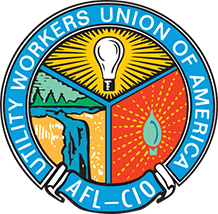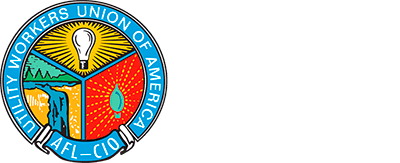This April, UWUA Government Affairs Director Lee Anderson attended a White House meeting where the Biden Administration announced historic new actions to create jobs and invest in the energy communities that have powered this nation for generations.
President Biden came to the White House to take action to help energy-producing parts of the country, which for decades saw jobs exported out and products imported in, all while other countries surpassed the United States in critical sectors like infrastructure, clean energy, and semiconductors. The administration’s Investing in America agenda is designed to turn that tide, seeking to bring manufacturing jobs back home and ensure we rebuild the economy so that communities are not left behind.
Having taken input from stakeholders across the political spectrum, including organized labor generally, and the UWUA in particular, the administration announced actions to drive new investment in energy communities to support their economic revitalization and strengthen American supply chains.
These investments build on the more than $14 billion from across federal agencies that the White House Interagency Working Group on Coal and Power Plant Communities and Economic Revitalization (IWG) has already driven to energy communities across the country. They also build on the more than $7.4 billion that companies have invested in energy communities to spur clean energy manufacturing, steel production, and critical minerals processing.
The IWG released a memorandum of understanding between 11 federal agencies to work together to get new resources into energy communities. Agencies will support rapid response teams to provide more targeted, on-the-ground assistance, resources, and technical guidance to communities and regions facing acute and unique economic challenges.
Under new Department of Treasury guidance, clean energy project developers and facilities will be able to take advantage of billions in bonuses on top of the investment and production tax credits through the Inflation Reduction Act for locating projects in an energy community. These bonuses will incentivize more clean energy investment in energy communities, particularly coal communities.
The Department of Energy announced the release of a Coal Power Plant Redevelopment Visualization Tool to enable community stakeholders to identify opportunities for redevelopment on these former industrial sites. Further, DOE announced it is making $450 million available through the Bipartisan Infrastructure Law to advance clean energy demonstration projects on current and former mine land, providing new economic opportunities for historic coal and mining communities.
As approximately 17,750 mine land sites are located across 1.5 million acres in the United States, it is estimated that repurposing this extensive area of land for clean energy projects could generate up to 90 GW of clean energy—enough to power nearly 30 million American homes.
In addition, DOE announced it is making $16 million available to the University of North Dakota and West Virginia University to complete design studies for the first-ever full-scale domestic demonstration refinery that will extract and separate rare earth elements and other critical minerals from coal ash, acid mine drainage, and other mine waste. This project will help strengthen American supply chains, revitalize energy communities, and reduce reliance on international competitors.
As examples of community redevelopment by the private sector, Berkshire Hathaway Energy recently broke ground on a new solar energy microgrid in Jackson County, West Virginia that will power a new aerospace manufacturing hub on the site of a former aluminum plant. Precision Castparts Corp., a Berkshire Hathaway business, will build a $500 million state-of-the-art titanium melt plant powered by 100% renewable energy, which will bring 200 jobs to the site. Additionally, Our Next Energy, a Michigan-based battery manufacturer, will locate a $22 million factory on the site that will produce large-scale batteries and employ about 100 people.
Further, TerraPower, a new nuclear initiative announced by Bill Gates in cooperation with PacifiCorp, intends to invest $2 billion, in addition to $1.5 billion in funding from the Bipartisan Infrastructure Law, to build an advanced nuclear reactor on a retiring coal plant in Kemmerer, Wyoming. This first-of-a-kind reactor will create an expected 2,000 construction jobs and 250 full-time jobs.
The actions announced at the recent White House event build on the IWG’s ongoing multi-agency efforts to demonstrate the administration’s whole-of-government approach to partnering with energy communities to build stronger local economies. With advice and guidance from stakeholders of every description, including the UWUA, President Biden’s economic agenda will continue to drive billions in public and private sector investments to spur the creation and retention of good-paying, union jobs and revitalize energy communities.

